Focus Multivitamin Supports Overall Health & Increases Energy Gummies
Focus Multivitamin Supports Overall Health & Increases Energy Gummies
Share
SKU:FV-250
549 in stock
Couldn't load pickup availability
We accept

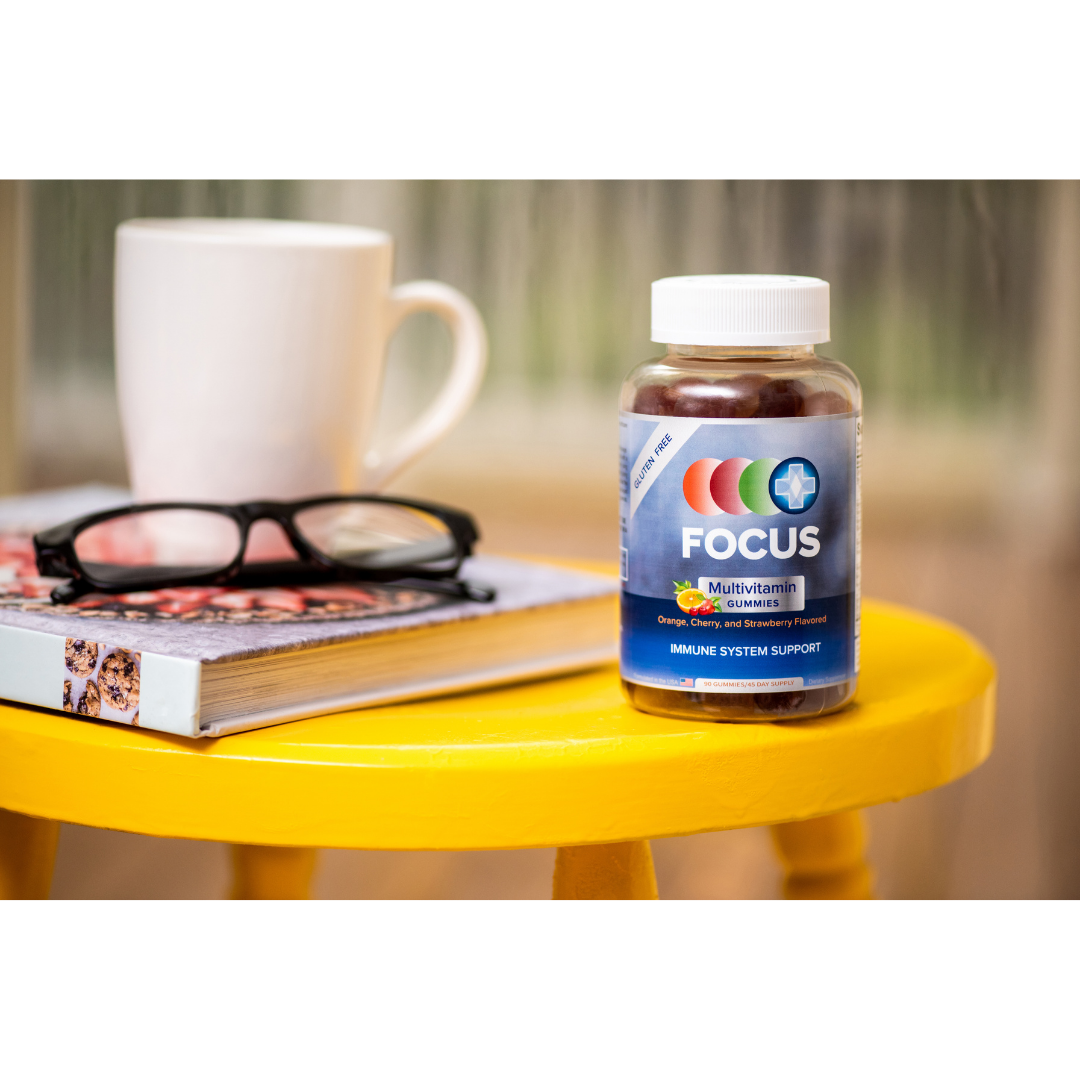


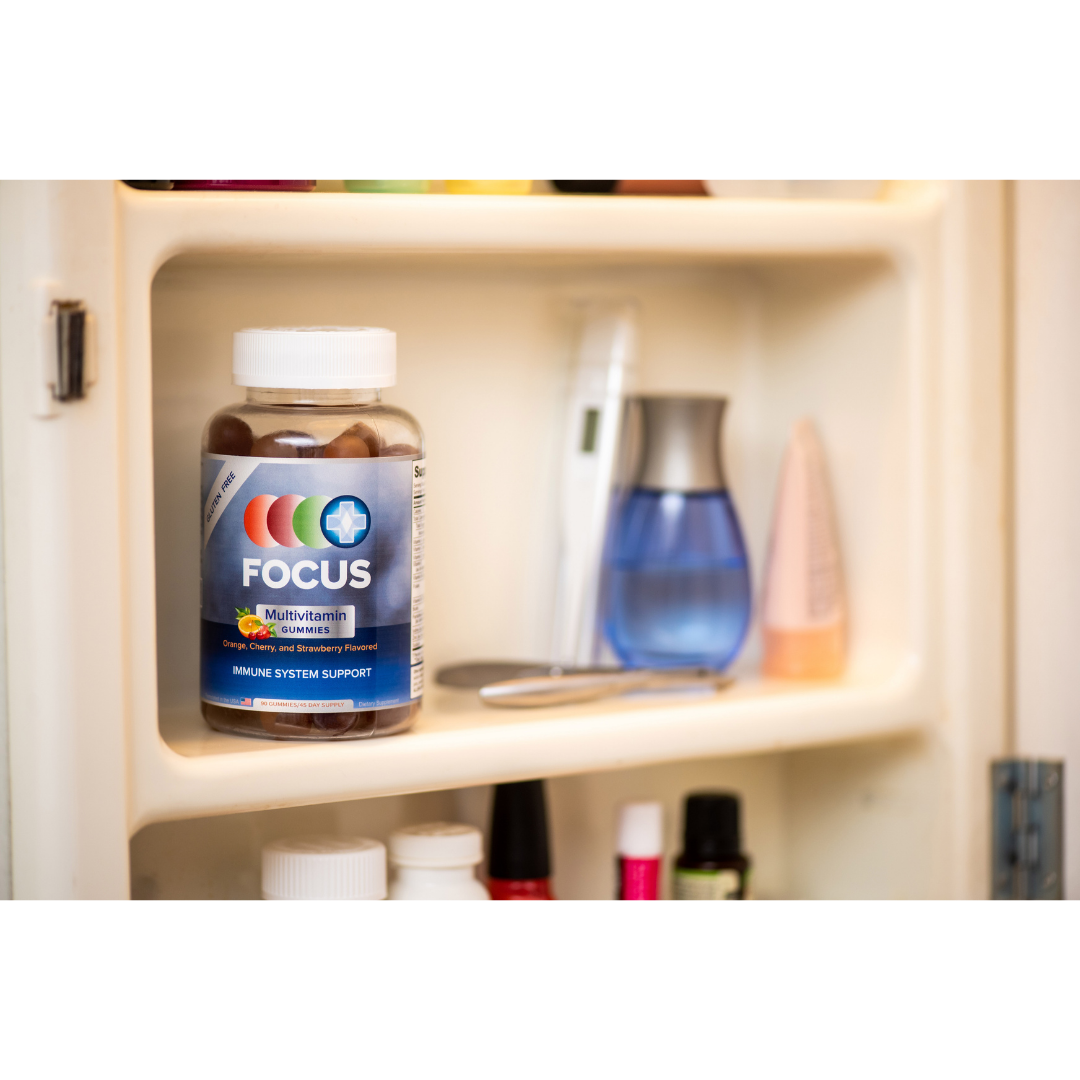
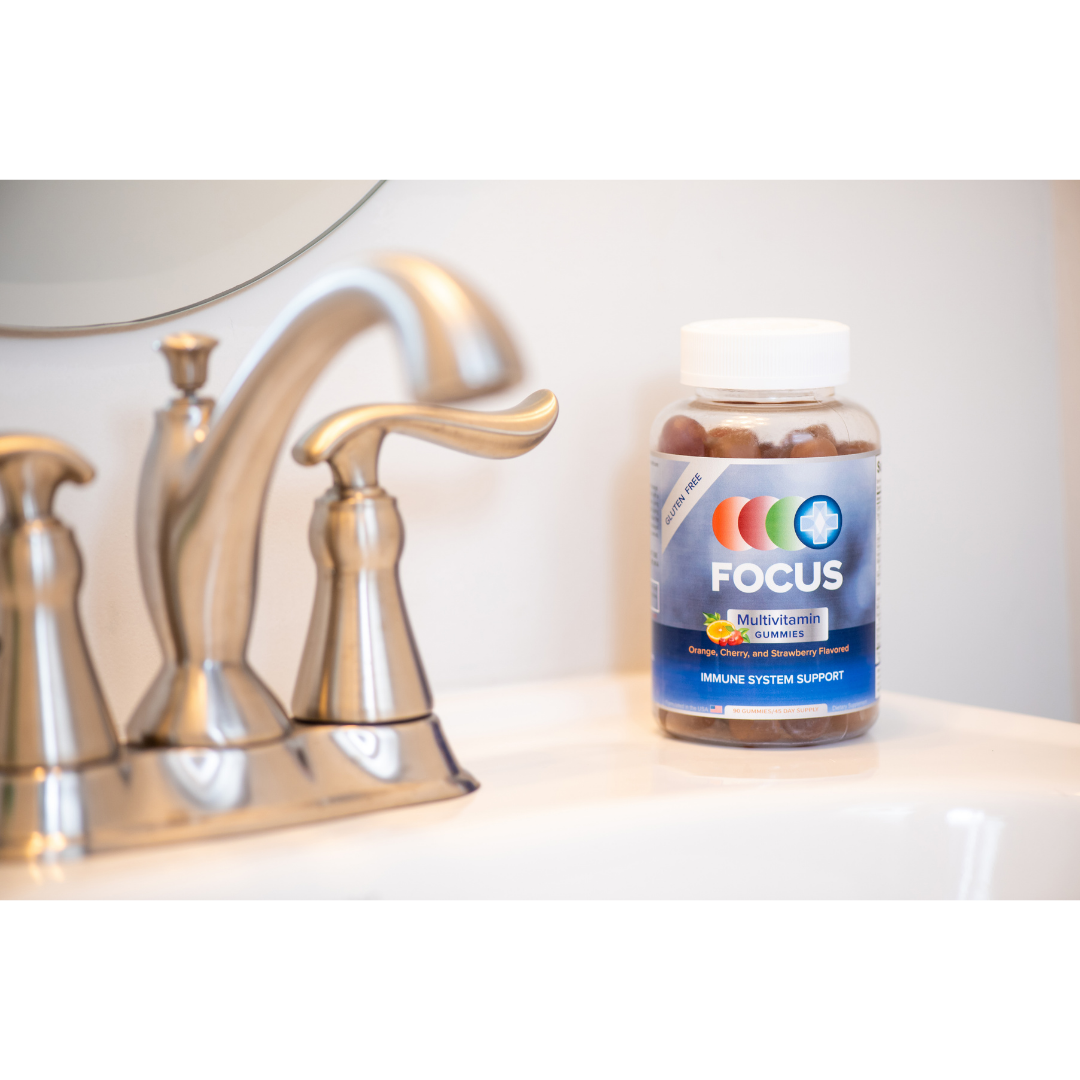
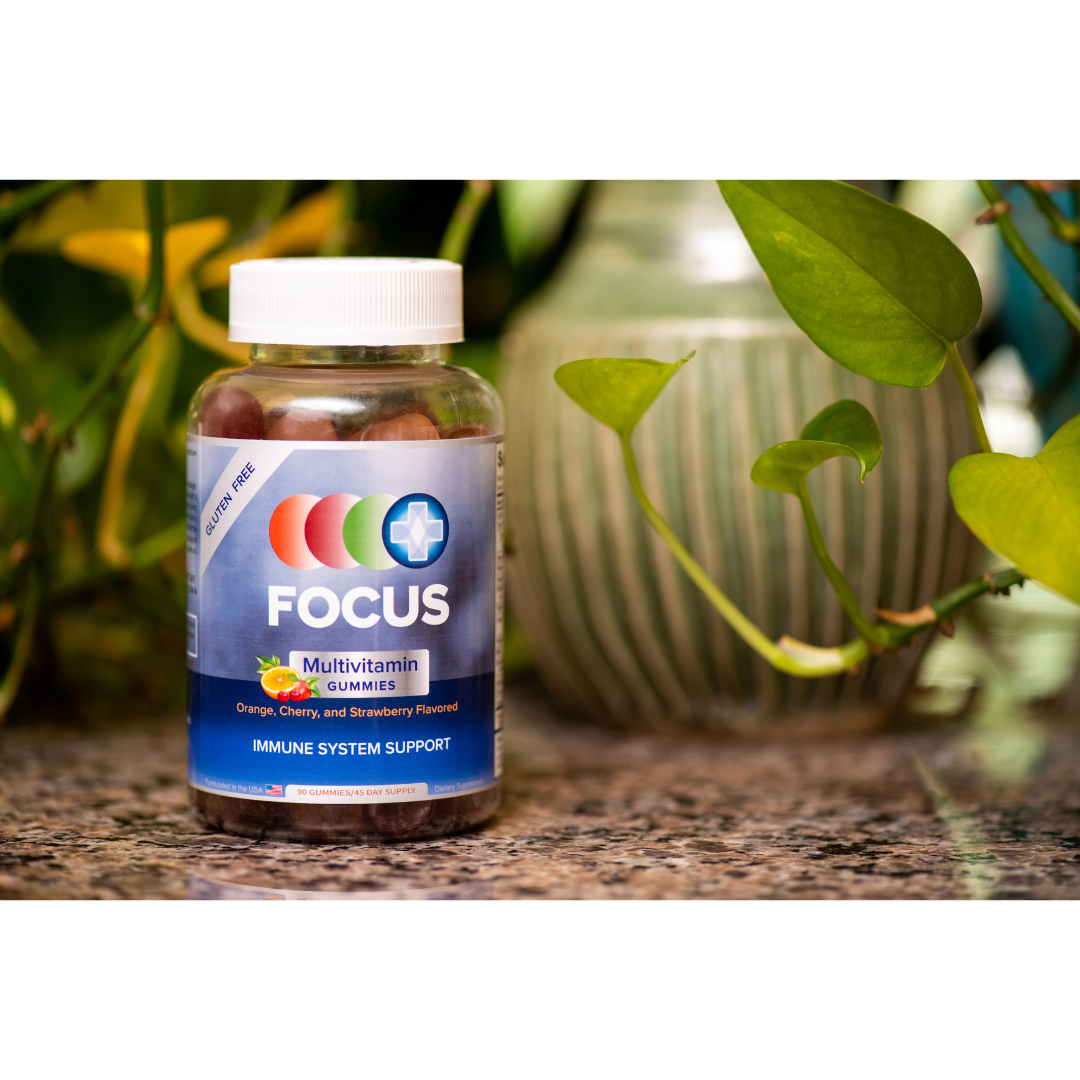
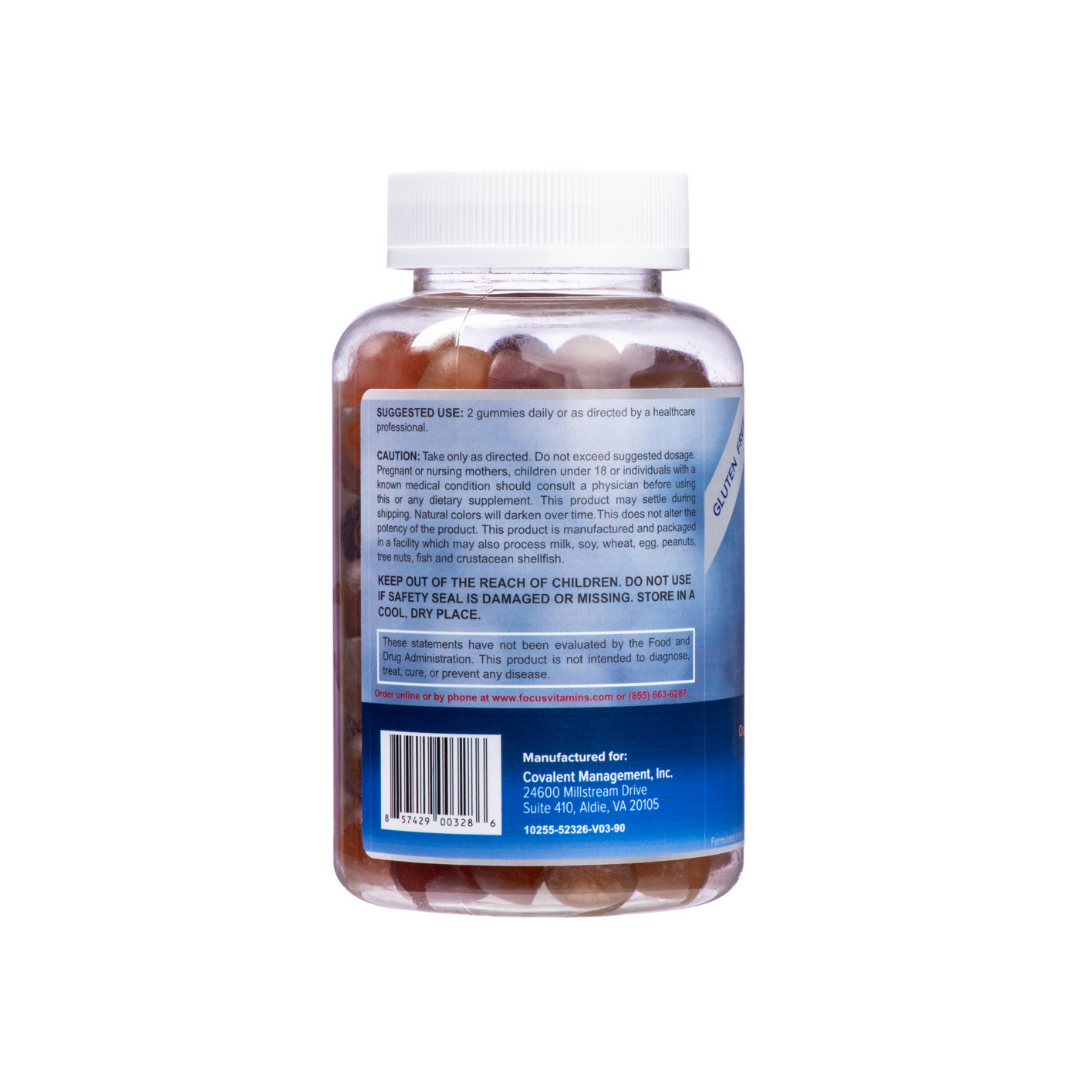
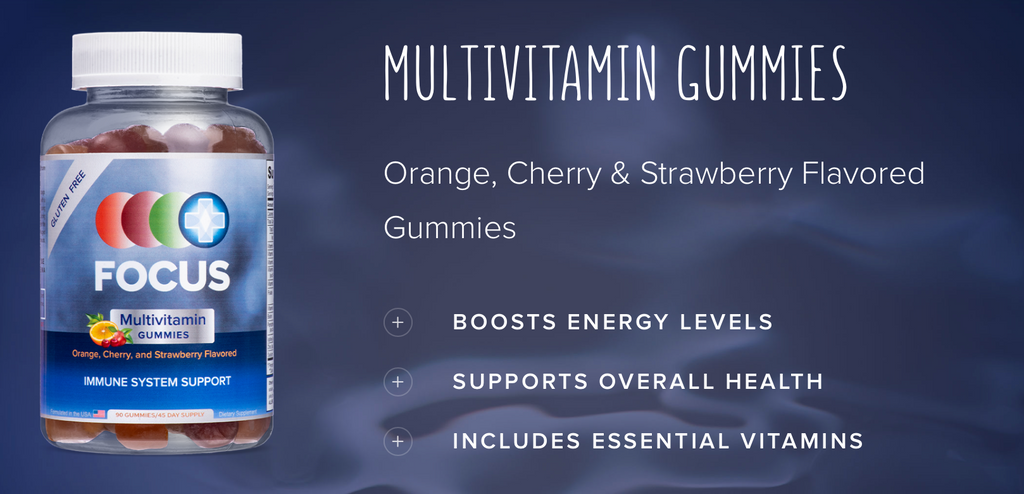
A healthy diet balances the nutrients and benefits gained from protein, vegetables, fruits, grains, and dairy. Sometimes a busy lifestyle makes it hard to keep up with food and nutrition. A multivitamin blend supplement can be added to your daily routine to help assure you are getting the nutrients you need to support immunity and an overall healthy lifestyle.
Suggested Use: 2 gummies daily or as directed by a healthcare professional.
What benefits can you get from a multivitamin?
- Boosts energy levels
- Supports overall health for immunity, skin ,and heart health
- Includes all of the essential vitamins A, B’s, C, D, E, and more
- Maintains or improves overall health
Features:
- FLAVORED MULTIVITAMIN SUPPLEMENT: Busy lifestyles make it hard to keep up with food and nutrition. A multivitamin blend supplement can be added to your daily routine to fill in your nutrition gaps.
- SUPPORTS OVERALL HEALTH: These multivitamin gummies help to boost energy levels, overall health for immunity, skin and heart health, while including all the essential vitamins such as A, B’s, C, D, E and improve your overall health.
- PERFECT FOR ACTIVE LIFESTYLES: With vitamins, minerals, essential iron and calcium, this multivitamin can safely be added to a meal or taken on days you don’t have the time to benefit from a nutritious meal.
- DAILY DIETARY NEEDS: This daily vitamin gives you the support immunity and healthy lifestyle you need. It can be taken everyday to maintain your overall health.
- CONTAINS NUTRIENTS IN FOODS: Whether you don’t like vegetables, have a busy soccer schedule or are getting less sunshine in the winter, this multivitamin is a foolproof way to ensure you are getting the nutrients you need.
Ingredients
Sugar, Vitamin A, C, D, E, B-6, B-12, Folate, Biotin, Iodine, Panthothenic Acid, Zinc, Sodium, Glucose syrup, sugar, water, citric acid, pectin, sodium citrate, natural flavors, natural colors (annatto, elderberry juice, grape juice concentrate), coconut oil, and carnauba wax
FAQ's
Q: How do multivitamins help?
A: A multivitamin taken daily assures any gaps in nutrition are filled in. They provide daily nutrition on a regular basis to help maintain immunity and health.
Q: Do I need to take a multivitamin if I eat a healthy diet?
A: Many people are able to get a balanced nutrition through their daily meal plans by eating a healthy balanced food plan. They get the vitamins, minerals, and essential iron, calcium, vitamin A, B, and C, and more, that they need. An active fast-paced lifestyle can make it hard to keep up with meals throughout the day. It can be difficult to get the sunshine for vitamin D in the winter and the elderly may not be eating enough food. A multivitamin ensures there are no gaps in getting the nutrients needed on a daily basis and can be safely added to meal intake.
Q: Is it ok to give children a multivitamin?
A: Whether it is not liking vegetables like broccoli, having a busy soccer schedule, or getting less sunshine in the winter months, children can benefit from a daily multivitamin. And gummies are an easy foolproof way to ensure getting all of the nutrients and value of a multivitamin. Just like you, kids benefit too!
Q: Should I take a multivitamin during pregnancy?
A: Yes. Discuss it with your health care provider to find out which multivitamin delivers the best all-around benefits for you.
Q: Should I take a multivitamin if I have a medical condition?
A: Of course! You want to make the best healthy decision for you. Check with your doctor to find out the best multivitamin for you.


